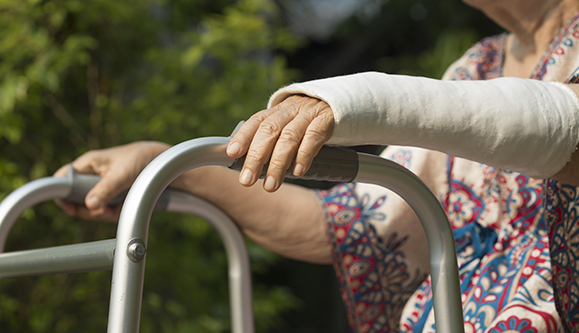

While it is normal to lose some bone density, as you get older, it is not normal to have osteoporosis or to get broken bones from minor bumps or falls.10
Each broken bone impacts your quality of life and ability to do everyday things.8,9
Don’t accept broken bones as part of growing old, a broken bone is preventable.11 It’s never too late to take care of your bones.


One fracture will lead to another – once you suffer a broken bone, your risk of future fractures increases by up to ten times.12 And the risk is greatest in the two years immediately following a fracture.13
Your next fracture could be a broken hip. Did you know that up to 40% of people who suffer a hip fracture have experienced a previous fracture?14
Remember that broken bones can mean osteoporosis, and osteoporosis can be treated.11
References – Fracture & osteoporosis
1 Amgen and International Osteoporosis Foundation. Fight the fracture IOF survey. 2017. osteoporosis.foundation/educational-hub/material/surveys.
2 International Osteoporosis Foundation. Capture The Fracture. A Global Campaign To Break The Fragility Fracture Cycle. 2012. osteoporosis.foundation/capture-fracture .
3 Sambrook P, et al. Lancet 2006;367:2010–18.
4 International Osteoporosis Foundation. The Asia-Pacific regional audit. Epidemiology, costs & burden of osteoporosis in 2013. osteoporosis.foundation/educational-hub/material/audits.
5 International Osteoporosis Foundation. That’s osteoporosis. A compact guide to osteoporosis and its prevention and treatment. 2019. osteoporosis.foundation/educational-hub/material/patient-resources.
6 International Osteoporosis Foundation. Gaps an solutions in bone health. A global framework for improvement. 2016. osteoporosis.foundation/educational-hub/files/gaps-and-solutions-bone-health.
7 Cooper C. Am J Med 1997;103:12S-17S; discussion 17S-19S.
8 Adachi JD, et al. Mayo Clin Proc 2010;85:806–13.
9 Kerr C, et al. Osteoporos Int 2017;28:1597–607.
10 International Osteoporosis Foundation. Love your bones: Protect your future. 2016. osteoporosis.foundation/educational-hub/material/brochures.
11 Cosman F, et al. Osteoporos Int 2014;25:2359–81.
12 Lyet J. J Lancaster Gen Hosp 2006;1:91–95.
13 Johansson H, et al. Osteoporos Int 2017;28:775–80.
14 Papaioannou A, et al. BMC Musculoskelet Disord 2004;5:11.